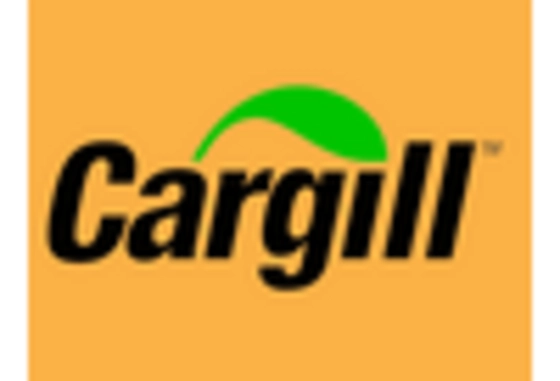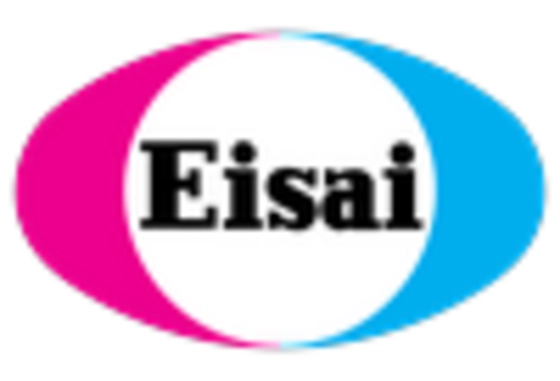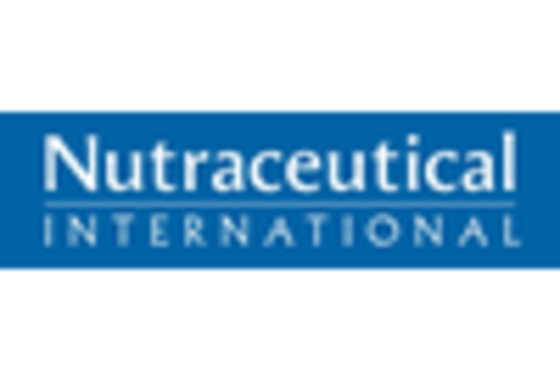Growing Health Consciousness
The Isoflavones Market is experiencing a notable surge in demand driven by an increasing awareness of health and wellness among consumers. As individuals become more health-conscious, they are actively seeking natural alternatives to synthetic products. Isoflavones Market, primarily derived from soy, are recognized for their potential health benefits, including hormonal balance and cardiovascular health. This trend is reflected in market data, which indicates a steady growth rate of approximately 6% annually in the consumption of isoflavones. The rising preference for plant-based diets further propels this demand, as consumers associate isoflavones with improved health outcomes. Consequently, manufacturers are expanding their product lines to include isoflavones, catering to this growing segment of health-oriented consumers.
Expansion of Functional Foods
The Isoflavones Market is significantly influenced by the expansion of functional foods, which are designed to provide health benefits beyond basic nutrition. As consumers increasingly seek foods that contribute to overall well-being, the incorporation of isoflavones into various food products has gained traction. Market data suggests that the functional food sector is projected to grow at a compound annual growth rate of 8% over the next five years. This growth is attributed to the rising demand for products that support heart health, bone density, and menopausal symptom relief, all of which are associated with isoflavones. Consequently, food manufacturers are innovating and reformulating products to include isoflavones, thereby enhancing their market presence and appealing to health-conscious consumers.
Innovations in Product Development
The Isoflavones Market is characterized by continuous innovations in product development, which play a crucial role in attracting consumers. Manufacturers are increasingly investing in research and development to create new formulations that enhance the bioavailability and efficacy of isoflavones. This focus on innovation is evident in the introduction of novel delivery systems, such as encapsulation techniques, which improve the absorption of isoflavones in the body. Market data suggests that companies that prioritize innovation are likely to capture a larger market share, as consumers are drawn to products that offer enhanced benefits. Furthermore, the trend towards personalized nutrition is prompting manufacturers to tailor isoflavone products to meet specific health needs, thereby driving further growth in the isoflavones market.
Rising Popularity of Dietary Supplements
The Isoflavones Market is witnessing a rise in the popularity of dietary supplements, which are increasingly being embraced by consumers seeking to enhance their health. The demand for isoflavone supplements is particularly strong among women experiencing menopausal symptoms, as these compounds are believed to alleviate discomfort associated with hormonal changes. Market data indicates that the dietary supplement sector is expected to grow by 7% annually, driven by this demographic trend. Additionally, the convenience and accessibility of supplements make them an attractive option for consumers. As a result, manufacturers are focusing on developing innovative isoflavone-based supplements, thereby expanding their market reach and catering to the evolving needs of health-conscious individuals.
Regulatory Support for Natural Ingredients
The Isoflavones Market benefits from increasing regulatory support for natural ingredients in food and dietary supplements. Governments and health organizations are recognizing the importance of natural compounds in promoting health and preventing diseases. This regulatory environment encourages the use of isoflavones, as they are derived from plant sources and are generally regarded as safe. Recent initiatives aimed at promoting plant-based diets and natural health products have further bolstered the market. For instance, certain countries have implemented policies that favor the inclusion of isoflavones in dietary guidelines, which may lead to an increase in their consumption. This supportive regulatory framework is likely to enhance the growth prospects of the isoflavones market, as manufacturers align their products with these guidelines.


















Leave a Comment